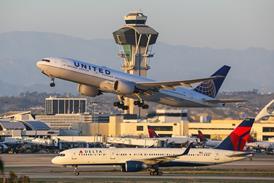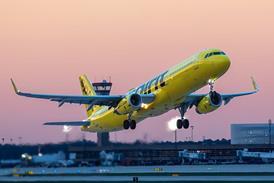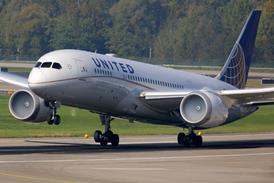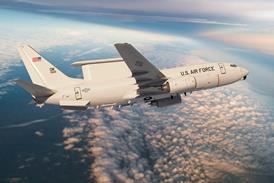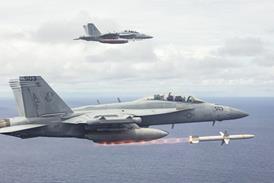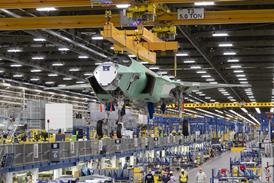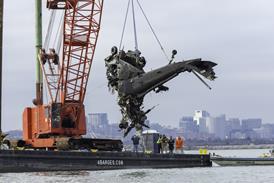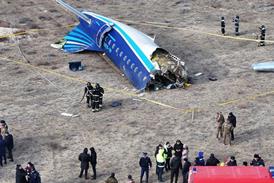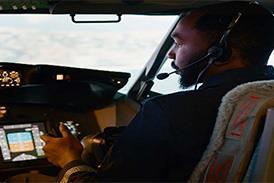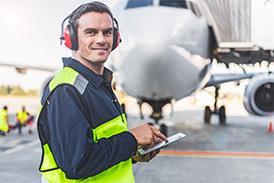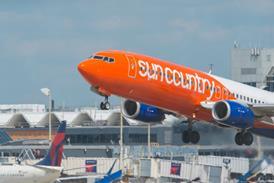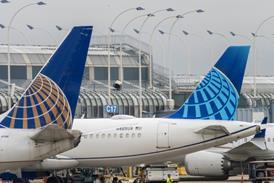It is clear that aerospace analysts, manufacturers and maintenance companies have little clarity about the specific impact of new tariffs on their operations and the broader sector – other than a widely held conviction that tariffs are bad for business.
In recent days, as US President Donald Trump slapped and then partly rescinded huge new import taxes, executives scrambled to make sense of it all. They have been seeking to tally their possible financial exposure while fearing tariffs could trigger a recession and upend already fragile supply chains.
Not all aerospace players oppose Trump’s moves. Some executives, speaking on the condition of anonymity, recently said they think tariffs could indeed spark more US manufacturing, to their benefit.
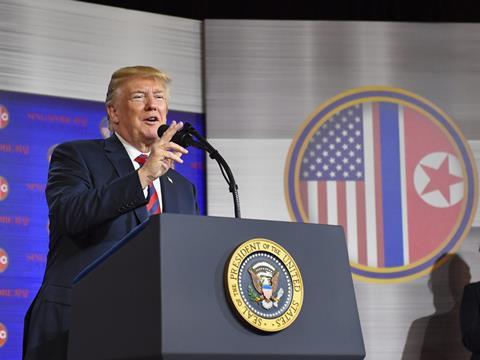
But again and again, insiders at the MRO Americas conference this week said the fallout is uncertain, that the tariffs are too complex to draw conclusions with any degree of certainty.
“No one knows [the impact],” says Jonathan Berger, managing director Alton Aviation Consultancy. “No one knows how long they are going to last. No one understands the formula. No one knows the goal.”
“It’s too early… We don’t know how it’s going to impact” the MRO industry, says Virgil Pizer, chief executive of Florida-based gas turbine maintenance provider Pem-Air.
The uncertainty partly reflects the start-then-stop nature of Trump’s tariff strategy. But also, calculating the financial impact is no simple matter. Aerospace components often include parts sourced from various countries, with some parts crossing multiple borders and subjected to different tariffs along the way before ending up on, say, Boeing or Airbus jets.
As a result, aerospace insiders say some firms may need teams of tariff attorneys and other experts to calculate the levies.
The aerospace industry has been on edge since Trump imposed tariffs on Canada and Mexico last month.
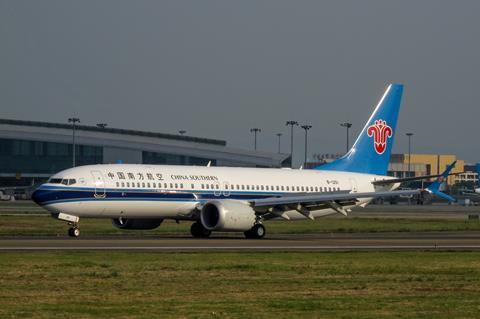
But Trump brought down the hammer in recent days, slapping 10% duties on all imported goods starting 5 April. Notably, aerospace components arriving from Canada and Mexico are exempt from tariffs under a previous trade deal.
Then on 9 April, Trump imposed additional “reciprocal” tariffs against the European Union and more than 50 countries, a move the White House says addresses “disparate tariff rates and non-tariff barriers”. Those alleged disparities, according to the White House, have driven a US trade deficit, deprived US manufacturers of fair access to other markets and contributed to a “hollowing out” of US manufacturing.
The reciprocal tariffs included, for example, import taxes of 34% against China, 20% against the European Union and 24% against Japan.
MORE EXPENSIVE
“It’s going to make everything more expensive,” Berger told FlightGlobal on 8 April, the night before the new taxes were to take effect. “There’s a lot of concern.”
The moves sent shock waves through the economy, sparking a massive stock sell-off and leaving aerospace executives scrambling to understand the ramifications.
“You can’t just go switch your supply chain overnight,” Kim Ernzen, chief operating officer of maintenance shop StandardAero, said the morning of 9 April. “At the end of the day, it’s going to be added cost to our customers.”
“Our legal team is trying to sort through the… confusion,” added Dave Chriske, president of parts provider Chromalloy’s material solutions business.
David Chaimovitz, CEO of parts provider Setna iO, says new tariffs could require that his firm, when breaking down an engine, identify each part’s country of origin to determine tariff applicability.
Many aerospace insiders sighed collectively with relief midday on 9 April when president Trump said on social media that, while he was leaving a baseline 10% tariff in place, he would pause for 90 days the additional country-specific tariffs, except for that against China.
Though stock markets initially roared back, the US-China trade war has since only escalated, with Trump and Chinese leader Xi Jinping slapping increasingly higher import taxes against each other. The latest figures are 125% imposed by China and 145% by the USA.
The uncertainty caused by the tariffs was enough for at least one aerospace company, turbofan component supply Howmet Aerospace, to declare in a recent letter to customers that the tariffs constitute “force majeure” – an event Howmet considered sufficiently extraordinary to permit it to modify contracts, according to a Reuters report.
Howmet declines to comment.
Airbus and Boeing decline to put dollar figures on import duties that their aircraft might incur when shipped across borders.
“We’re in the mode of looking a lot of scenarios, doing a lot of work and being… flexible on how we respond once we have more certainty,” says Robin Hayes, chief executive of Airbus in the Americas.
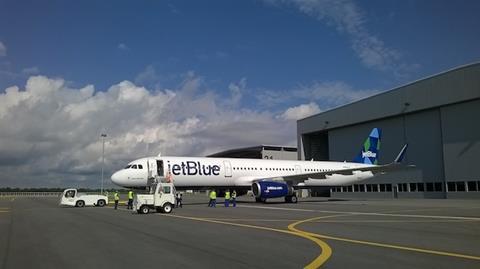
Roughly four decades of tariff-free aerospace trade fuelled the sector’s growth and allowed Airbus to expand in the USA, Hayes adds. Airbus assembles jets in Mobile with components sourced from Europe and elsewhere.
Hayes also warns that a trade war could impact US aerospace manufacturing disproportionately because the USA exports more aerospace products than it imports.
How tariffs might impact Boeing’s deliveries to Chinese carriers also remains unclear.
The US company has delivered 20 jets this year to Chinese customers and is set to deliver another 29 before year-end, according to fleet-date provider Cirium.
Addison Schonland, co-founder of AirInsight, suspects China has few options but to keep taking Boeing jets because Airbus lacks capacity to provide more aircraft anytime soon.
Tariff anxiety and resultant stock market fluctuation have some aerospace executives more worried about recession than about tariffs.
“I do not have any specific concerns for AAR in terms of how tariffs might impact us… We would have to pass it along to customers,” says maintenance firm AAR’s CEO John Holmes. “My focus on tariffs is… the implication for the broader economy.”
AAR’s business would suffer if, for instance, a recession causes air-travel demand to dry up.
“The broader macro implications are what will be keeping me up,” Holmes says.

